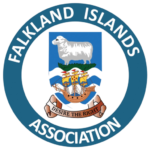Argentina: An Economic Crisis Looming?
President Macri has been forced to seek a standby loan of $30 billion from the IMF, following a run on the peso. The IMF is deeply unpopular in Argentina, being largely blamed for Argentina’s economic crisis in 2001. The expectation of IMF demands for further austerity measures, when popular resentment against Macri’s economic reforms is already high, has led to mass demonstrations in the country. Earlier in the year, analysts were confident that President Macri would have a good chance of re-election in October 2019. Now this is not so certain.
President Macri came into power in December 2015 promising a return to a free market economy. His reform programme has been dramatic – ending capital controls, allowing the peso to float, resolving the long-standing debt disputes with private international creditors, curbing public expenditure and cutting state subsidies, trying to root out corruption and jobs for the boys. There has been progress: Argentina’s GDP rose by nearly 3% for most of 2017; the fiscal deficit was reducing (standing at 6.1% of GDP in 2017); inflation had come down from 40% under Cristina de Kirchner to 25% in 2017; unemployment rates were improving (down from over 9% in 2016 to just over 7% in 2017); and Macri’s international push for capital investment and the transfer of technological knowhow was beginning to bear fruit. But it has not been fast enough.
April 2018 saw a sudden drop in investor confidence. The peso fell to an all-time low of about 25 pesos to the US dollar, forcing the Central Bank to intervene by selling federal reserves to prop up the peso and raising interest rates in a series of hikes from 26.3% to 40% to stop investor flight. Macri had to go cap in hand to the IMF, sending his Finance Minister, Nicolas Dujovne, to Washington, in mid-May to seek a $30 billion emergency standby arrangement. With support from Donald Trump, Christine Lagarde has confirmed that negotiations will get under way immediately (but these could take some time).
Analysts have been quick to point out that this crisis is not on the same scale as in 2001 when Argentina defaulted massively on its international debts. Argentina no longer pegs the peso to the US dollar as it did then, which gives it flexibility to use monetary and exchange rate policies to respond to economic problems. The economy is still growing albeit slowly and, whilst Argentina still has huge borrowing costs (at a staggering 35% of GDP), these are much less than in 2001. With private sector foreign debt standing at under 5% of GDP, Argentina’s liquidity risk is also much lower. Macri is confident that it can all be brought back to an even keel but his confident prediction at Davos in January 2018 that inflation could be brought down to single figures by the end of 2019 seems now to be supremely optimistic.
So why was there a run on the peso? Most pundits would argue that investors saw a safer haven for their money in the US, with 10 year Treasury bonds offering an interest rate of 3%. Argentina was considered vulnerable because it carries significant current account deficits with high inflation and a heavy reliance on short-term financing. Additionally, an unseasonal drought had seriously affected Argentina’s agricultural exports. There are fears that short-term investors will pull out of other emerging markets, like Brazil, Mexico and Turkey, causing a wider international problem. Much depends on the IMF’s response.
Domestically, Macri has been hit badly. His popularity ratings had already declined from over 60% in 2017 to some 40% this year, due largely to popular opposition to his austerity measures, the removal of state subsidies and the reduction in welfare payments, and the rise in the cost of living. But so far, Macri has been able to put his legislation through Congress with the support of moderate Peronists, despite not having a majority in either House. The appeal to the IMF has, however, been deeply unpopular. The IMF has been blamed in Argentina for their economic woes in 2001; Nestor Kirchner withdrew Argentina’s membership in 2006; and Argentinians expect the IMF now to impose yet more austerity measures, if a deal is forthcoming. Macri’s address to the nation on 8 May announcing his approach to the IMF sparked demonstrations throughout the country.
This may lead to a resurgence of support for a return to Peronism; Cristina de Kirchner still commands a popularity rating of about 25% despite her history. The Peronist opposition to Macri has, however, been deeply divided but the political opportunity is there for a new leader to emerge to contest the Presidential election in October 2019. Macri had hoped to be the first non-Peronist to be elected for a second term; he may still be optimistic but he may also have to give way to the more popular Governor of Buenos Aires Province, Maria Eugenia Vidal. His survival depends on his being able to turn the economy around in the run-up to the elections and keeping the opposition disunited.


